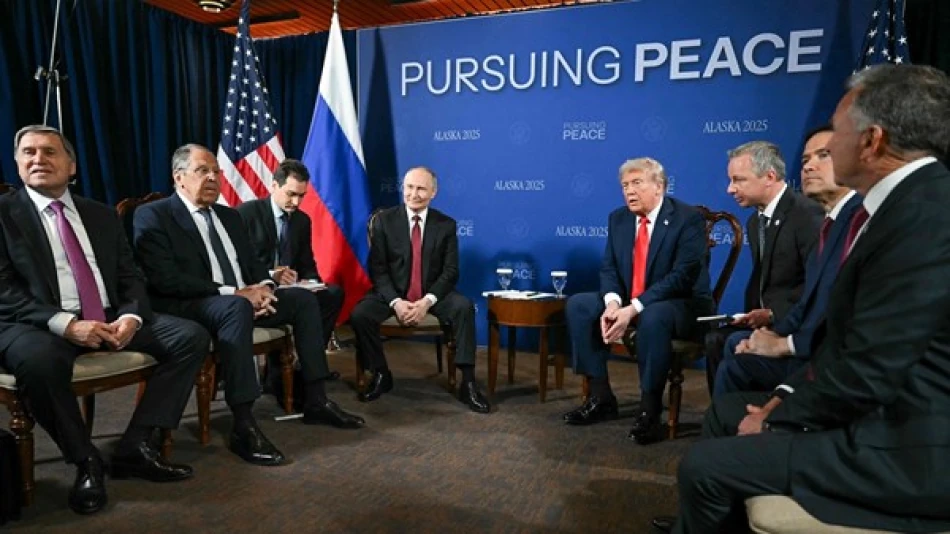
Trump and Putin Hold Historic Summit in Alaska
Trump and Putin Launch High-Stakes Alaska Summit to End Ukraine Crisis
President Donald Trump and Russian President Vladimir Putin have begun crucial talks in Alaska aimed at resolving the ongoing Ukraine crisis, marking the first face-to-face diplomatic engagement between the superpowers since the conflict escalated. The summit, held at Elmendorf-Richardson Air Base, represents a potential turning point in one of the most significant geopolitical standoffs of recent years.
Silent Start to Critical Negotiations
Both leaders maintained strict silence during the opening moments of their meeting, offering no statements or responses to media questions as they sat side by side. This calculated discretion suggests the sensitivity of the negotiations and the high stakes involved for both nations.
The choice of Alaska as the meeting venue carries symbolic weight, representing neutral ground between the two powers while highlighting America's strategic position bridging Europe and Asia. The remote military base setting also ensures maximum security and minimal external interference.
High-Level Diplomatic Teams Signal Serious Intent
The composition of both delegations underscores the summit's importance. Trump brought Secretary of State Marco Rubio and Special Envoy Steve Witkoff, indicating a comprehensive approach to the Ukraine issue. Putin's team included Foreign Minister Sergey Lavrov and Presidential Advisor for Foreign Policy Yuri Ushakov, both veteran negotiators with deep experience in U.S.-Russia relations.
Strategic Implications for Global Markets
Financial markets will be watching closely for any breakthrough, as resolution of the Ukraine conflict could dramatically reshape global energy markets, defense spending, and international trade flows. A successful negotiation could ease inflationary pressures on commodities and restore stability to European energy supplies.
Historical Context and Precedent
This Alaska meeting echoes previous high-stakes U.S.-Russia summits, from Reagan-Gorbachev meetings that helped end the Cold War to more recent diplomatic efforts. However, the current geopolitical landscape presents unique challenges, with NATO unity, European security architecture, and global power balances all hanging in the balance.
The timing suggests both leaders recognize the urgent need for de-escalation, particularly as the conflict's economic and humanitarian costs continue mounting. For Trump, early diplomatic success could define his second presidency, while Putin faces increasing domestic and international pressure to find an exit strategy that preserves Russian interests.
What Success Looks Like
Any meaningful agreement would likely need to address territorial disputes, security guarantees, and reconstruction frameworks. The involvement of experienced diplomats from both sides suggests preliminary groundwork may have already established potential compromise positions, making this summit more than mere political theater.
Most Viewed News

 Layla Al Mansoori
Layla Al Mansoori






